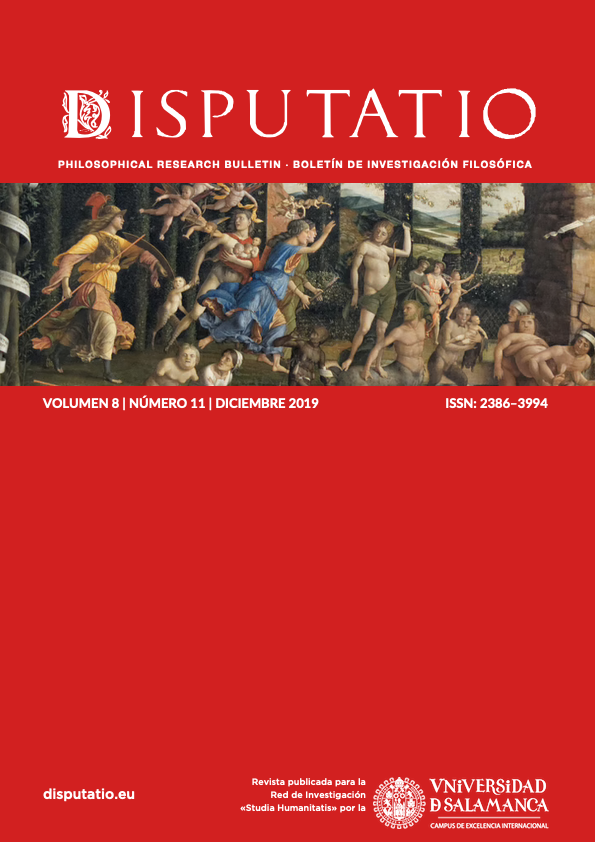El aspecto holístico del fenómeno del entrelazamiento
Resumen
Mi es objetivo comparar los caminos conceptuales e históricos que llevaron a Bohr y Schrödinger a desarrollar sus posiciones con relación al fenómeno de entrelazamiento. Para este propósito, el concepto de holismo y no separabilidad en relación a las opiniones de Bohr y Schrödinger serán cruciales para reconstruir sus posiciones. La idea será sostener que el concepto de no separabilidad subyace en el fenómeno de entrelazamiento. Todavía más, pondré el énfasis en las divergencias entre Bohr y Schrödinger a pesar de su compartida visión holista del mundo.
Referencias
Bitbol, Michel (1996). Schrödinger’s Philosophy of Quantum Mechanics. Dordrecht: Kluwer Academic Publishing.
Bohm, David and Hiley, Basil J. (1993). The Undivided Universe. London and New York: Routledge.
Bohr, Niels (1915). “On the Quantum Theory of Radiation and the Structure of the Atom”, Philosophical Magazine, 30: pp. 394-415.
Bohr, Niels (1918). “The Quantum Theory of Line-Spectra”, D. Danske Vidensk. Selsk. Skrifter, 8 (4): pp. 1-118. In NBCW 3, 65-185, p. 75.
Bohr, Niels, Kramers, Hans A., and Slater, John C. (1924). “The Quantum Theory of Radiation”, Phil. Mag., 47: pp. 785-802. In NBCW 5, pp. 99-118.
Bohr, Niels (1925). “Atomic Theory and Mechanics”, Nature, 116: pp. 845-852. In Bohr 1934, pp. 25-51.
Bohr, Niels (1927). “The quantum postulate and the recent development of atomic theory”. In Bohr, 1934 (Reprinted in Bohr, 1987, Woodbridge, CT: Ox Box Press), pp. 52-91.
Bohr, Niels (1929). “Atomic physics and the fundamental principles underlying the description of nature”, Fysisk Tidsskrift . In Bohr 1934, pp. 102-119.
Bohr, Niels (1934). Atomic Theory and the Description of Nature. Cambridge, UK: Cambridge University Press.
Bohr, Niels (1935). “Can Quantum-Mechanical Description of Physical Reality be Considered Complete?”, Physical Review, 48: pp. 696-702.
Darrigol, Olivier (1992). “Schrödinger’s Statistical Physics and Some Related Themes”. In Erwin Schrödinger. Philosophy and the Birth of Quantum Mechanics, edited by M. Bitbol and O. Darrigol. Gif-sur-Yvette: Editions Frontieres, pp. 237-276.
Esfeld, Michel (2004). “Quantum Entanglement and a Metaphysics of Relations”, Studies in History and Philosophy of Modern Physics, 35: pp. 601–17.
Einstein, Albert, Podolsky, Boris, Rosen, Nathan (1935). “Can quantum-mechanical description of reality be considered complete?”, Physical Review, 47: pp. 777-780.
Healey, Richard (1991). “Holism and Nonseparability”, Journal of Philosophy, 88: pp. 393-421.
Healey, Richard (2009). “Holism and Non-separability in Physics”. In The Stanford Encyclopedia of Philosophy (Spring-Edition), edited by Edward N. Zalta. Consulted December 12, 2018. Available at: http://plato.stanford.edu/archives/spr2009/entries/physics- holism/.
Heisenberg, Werner (1930). The physical principles of the quantum theory. The University of Chicago Press.
Heisenberg, Werner, Born Max, Jordan, Pascual (1925) .“Zur Quantenmechanik 2”, Zeitschr. F. Phys., 35: pp. 557-615.
Hoyer, Ulrich (1981). Niels Bohr Collected Works, vol. 2: Work on Atomic Physics, 1912-1917. Amsterdam: North-Holland Publishing Company.
Høffding, Harald (1908). A History of Modern Philosophy, vol. II (trans. B.E. Meyer). London: MacMillan.
Kalchar, Jørgen (ed.) (1985). Niels Bohr Collected Works, vol. 6: Foundations of Quantum Physics I, 1926-1932. Amsterdam: North-Holland/Elsevier.
Murdoch, Dugald (1987). Niels Bohr’s Philosophy of Physics. Cambridge University Press.
Norton Wise, Matthew (1997). “How do sums count. On the cultural origin of statistical causality”. In The Probabilistic Revolution I, 2 vols. Cambridge, Mass., pp. 395-425.
Roselfeld, Leon and Rud Nielsen, Jens (eds.) (1976). Niels Bohr Collected Works, vol. 3: The Correspondence Principle, 1918-1923. Amsterdam: North-Holland Publishing Company.
Schrödinger, Erwin (1924). “Bohrs neue Strahlungshypothese und der Energiesatz”, Die Naturwissenschaften, 12: pp. 720-724. Quoted and translated by O. Darrigol 1992, p. 268.
Schrödinger, Erwin (1925). “Bemerkungen über die statistische Entropiedefinition beim idealen Gas”, Berlin Akademie der Wissenschaft Sitzungsberichte, pp. 434-441.
Schrödinger, Erwin (1926a). “Zur Einsteinschen Gastheorie”, Phys. Z., 27: pp. 95-101.
Schrödinger, Erwin (1926b). “Die Energiestufen des idealen einatomigen Gasmodells”, Sitzungsberichte der Preußischen Akademie der Wissenschaften. Physikalisch-mathematische Klasse, pp. 23-36.
Schrödinger, Erwin (1929). “Die Erfassung der Quantengesetze durch kontinuierliche Funktionen”, Naturwissenschaften, 26, pp. 486-489; translated by O. Darrigol 1992, p. 259.
Schrödinger, E. (1935a). “Die gegenwärtige Situation in der Quantenmechanik”, Die Naturwissenschaften, 23: pp. 807-812, pp. 823-828, pp. 844-849. Translation originally published as ’The current situation in quantum mechanics’ in Proc. of the Amer. Phil. Soc., 124: pp. 323-338.
Schrödinger, Erwin (1935b). “Discussion of Probability Relations between Separated Systems”, Proc. Cambr. Phil. Soc., 31: pp. 555-563.
Schrödinger, Erwin (1936) “Probability Relations between Separated Systems”, Proc. Cambr. Phil. Soc., 32: pp. 446-452.
Schrödinger, Erwin (1950). “What is an elementary particle?”, Endeavour, 9: pp. 109-116.
Schrödinger, Erwin (1995). The interpretation of quantum mechanics (Dublin seminars 1949-1955 and other unpublished texts), edited with introduction by M. Bitbol. Woodbridge, CT: Ox Bow Press 1995.
Stolzenburg, Klaus (ed.) (1984). Niels Bohr Collected Works, vol. 5: The Emergence of Quantum Mechanics, Mainly 1924-1926. Amsterdam: North-Holland/Elsevier.
Derechos de autor 2019 Disputatio. Philosophical Research Bulletin

Esta obra está bajo licencia internacional Creative Commons Reconocimiento-NoComercial-SinObrasDerivadas 4.0.
Derechos de autor y política de acceso abierto: https://studiahumanitatis.eu/ojs/index.php/disputatio/policies/copyright



